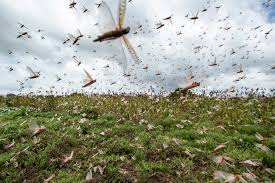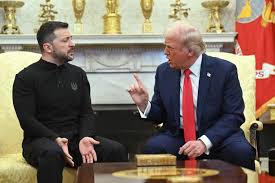Wielding my chainsaw, I took pains to make sure the tree would miss the Rabbi Sherer Hoop Memorial in my backyard. Read what I’m referring to here.


Wielding my chainsaw, I took pains to make sure the tree would miss the Rabbi Sherer Hoop Memorial in my backyard. Read what I’m referring to here.

A “notorious sect” that takes over towns “like locusts, killing everything they encounter, draining every last resource” has invaded a small Hudson Valley municipality!
Betcha can’t guess the identity of the invaders. well, you can find out at here.

A Pesach-themed piece I wrote for the Boston Globe can be read here.

President Trump’s executive order to dismantle the US Agency for Global Media, which oversees American independent news outlets like Voice of America, was greeted with cheers in some circles. In others, not so much.
To read about the issue, please click here.

An interesting Midrash is cited by Rav Yosef Nechemia Kornitzer (1880-1933), a great-grandson of the Chasam Sofer who served as the av beis din of Cracow before World War II. The Midrash is found in the Tanchuma manuscript discovered by Solomon Buber, published in 1885.
The Midrash speaks about the end of history and quotes Ovadiah (1:18): “And the house of Yaakov will be fire and the house of Yosef flame; and the house of Esav, straw. And they will light them aflame and devour them. And there will remain nothing of the house of Esav…”
Rav Kornitzer quotes its continuation: “And where did Moshe say this? [In the words] ‘it is the olah on its mokeid throughout the night until the morning… And the kohein will lift up the deshen [ashes ]… and place it next to the mizbei’ach’ ” (Vayikra 6, 2-3). A puzzling citation.
To explain it, he quotes his forebear the Chasam Sofer as casting the kohein’s lifting of the terumas hadeshen as the need for the kohein to not avert his eyes from the “lowly of worth.” He has a responsibility to lift them up and bring them to a holier place.
Rav Kornitzer asserts that the kohein’s responsibility is paralleled in our own vis-à-vis the rest of humanity – that we are in galus (the “night”) to spread knowledge of the Torah and to, by our dedication to Torah, attract those among other peoples, the “deshen”, to join us. That, he contends, is what will bring about the fulfillment of Ovadiah’s prophecy, the destruction of evil.
He then quotes another Midrash: “Rabi Yosi ben Kisma’s students asked him when Moshiach will come. He responded ‘This is the law of the olah’ ” (Vayikra 6:2).
Concludes Rav Kornitzer: “When the Jews fulfill their mission and ‘lift up the deshen’… Ben Dovid will arrive, may it be soon in our days.”
Sadly, the galus didn’t end in Rav Kornitzer’s days. May it end in ours.
© 2025 Rabbi Avi Shafran

A rumination on the meaning of “Palestinian” can be read here.

An opinion column I wrote for the Boston Globe appeared on March 21 and can be read here.

A famous palindromic word in the Torah is venasnu, in the second pasuk in the parsha. It means “and each man must give,” in the context of contributing the machatzis hashekel, which the Torah describes as “monetary atonement for [the giver’s] life” (Shemos, 30:12). The word reads the same forward and backward.
The Baal HaTurim sees that as a hint to the Gemara’s contention that one should “tithe so that you will become wealthy” (Taanis, 9a), that giving charity will result in the giver’s benefit .
The Vilna Gaon discerned a somewhat different message in the palindrome, namely, that life plays havoc with fortunes, and therefore giving tzedakah to others will merit others’ supporting us or our descendants in our times of need. What goes around, in other words, comes around.
He cites the Gemara in Shabbos 151b:
“Rabbi Ḥiyya said to his wife: When a poor person comes to the house, be quick to give him bread so that they will be quick to give bread to your children. She said to him: Are you cursing your children?
He said to her: the yeshiva of Rabbi Yishmael taught that galgal hu shechozer ba’olam – it is a ‘cycle that repeats in the world’.”
In other words, wealth and destitution come and go, in individual lives and in family lines. Great fortunes are made and lost, and rags can lead to riches.
Media mogul and billionaire Oprah Winfrey was born into an impoverished family in Mississippi; she went to college on a scholarship.
Socialite Jocelyn Wildenstein, who inherited billions from her art dealer husband, died dependent on $900 Social Security payments.
And those people’s descendants might find themselves in entirely different statuses from their antecedents. Wealth recycles, something to remember when approached by a beggar.
© 2025 Rabbi Avi Shafran

No matter our desire to embrace a country or leader as a truly reliable friend, we all — especially we Jews — do well to remember that there may not be any such thing, a truism about which Chazal warned us millennia ago.
To read what evoked that thought, please click here.

I’ve long fixated on a phrase Yisro uses. When he rejoins Moshe and joins Klal Yisrael, he declares why, although he had been a guru in countless cults, he came to the conclusion that “Hashem is greater than all the powers.”
“Because,” he explains, “of the thing that [the Mitzriyim] plotted against them [i.e. Klal Yisrael]” (Shemos 18:11).
Rashi, in explanation, cites the Mechilta: “… the Mitzriyim thought to destroy Yisrael by water and they were themselves destroyed by water.” And he quotes Rabi Elazar (Sotah 11a), punning on the word “plotted,” which can also mean “cooked,” that “in the pot that they cooked up they ended up being cooked.”
What strikes me is that it is irony – here, that the means the Mitzriyim employed to kill Jews ended up as the agent of their own downfall – that moves Yisro to perceive the Divine hand.
It is such a Purim thought. In Megillas Esther, too, although Hashem’s name is entirely absent, His hand is perceptible through the irony that saturates the story: Haman turns up at just the wrong place at just the wrong time, and ends up being tasked with arranging honors for his nemesis Mordechai. All the villain’s careful planning ends up upended, and he is hanged on the very gallows he prepared for Mordechai. Haman’s riches, according to the Book of Esther, were given to Mordechai. V’nahafoch hu, “and it was turned upside down.”
Amalek may fight with iron, but he is defeated with irony.
Shortly after Germany’s final defeat in WWII, an American army major, Henry Plitt accosted a short, bearded artist painting on an easel in an Austrian town and asked him his name. “Joseph Sailer,” came the reply.
Plitt later recounted: “I don’t know why I said [it, but] I said, ‘And what about Julius Streicher?’” – referring to the most vile and antisemitic of Nazi propagandists.
“Ya, der bin ich,” the man responded. “Yes, that is me.” And it was.
A reporter later told Major Plitt that, had only “a guy named Cohen or Goldberg or Levy… captured this arch-anti-Semite, what a great story it would be.”
Major Plitt, in fact, was Jewish.
Stars and Stripes in late 1945 reported that Streicher’s possessions were converted to cash and used to create an agricultural training school for Jews intending to settle in Eretz Yisrael.
And when Streicher was hanged at Nuremberg in 1946, his final words, shouted just before the trap sprang open, were: “Purim Fest 1946!” – a rather odd thing to say on an October morning.
© 2025 Rabbi Avi Shafran